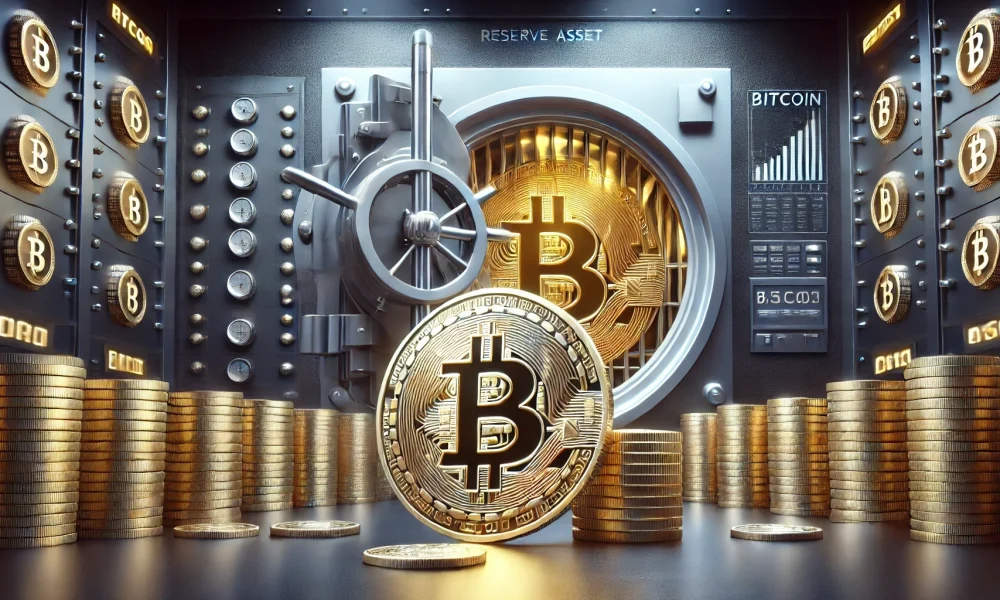If you haven’t heard already, President-elect Donald J. Trump has pledged to establish a strategic reserve of Bitcoin (BTC) by the U.S. government. While this has helped further fuel the asset’s current bull run, many still see this as unneeded or are wary of doing so. Unbeknownst to many is that governments worldwide have strategically stockpiled unique and peculiar assets for ages in important and booming industries. Below, we look at some of the top examples of this practice and the reasoning behind why the asset is stockpiled. First, though, let’s make the case for Bitcoin (BTC)
Orange Pilling a World Superpower
For Bitcoin enthusiasts, the road to get here has been long and rife with controversy and pushback. However, the world’s most popular digital asset was able to persevere, growing into a robust network the likes of which have never been seen before. How was it able to do so?
- Fair initial distribution
- Network Security
- Asset Accessibility
- Consensus Mechanism
For these reasons and more, Bitcoin has grown into an in-demand commodity on a global stage that has the potential to become ‘gold’ for the digital age. In doing so, its appeal as a reserve asset is greater than its ever been
To learn more about how each of these attributes has allowed Bitcoin to become what it is today, visit our article on the asset’s fundamentals and its ability to endure a crisis.
Unique and Peculiar Strategic Stockpiles
1. Maple Syrup (Canada)
Travel through the northern U.S. border, and you will find yourself in Canada, the ‘Great White North.’ Canada tops this list due to its Global Strategic Maple Syrup Reserve. Managed by the Federation of Quebec Maple Syrup Producers, this reserve was created to help stabilize prices in the international maple syrup market. This is crucial for Canada, as maple syrup remains an essential commodity for the vast nation.
In times of surplus or scarcity, the reserve ensures a steady supply, safeguarding Quebec’s dominance and Canada’s reputation as the world’s primary source of high-quality maple syrup. In fact, Canada alone supplies over 70% of the world’s syrup.
Notably, from 2011-2012, this reserve was the victim of what is now known as the ‘Great Canadian Maple Syrup Heist,’ which saw thieves abscond with ~3,000 tons of the commodity – which would be valued at roughly $17.8 million USD today.
2. Wine (France)
France also maintains a notable reserve of high-quality wine. This reserve, however, is maintained less as a financial asset and more as a diplomatic and cultural one. French wine holds immense global prestige and is often gifted in diplomatic exchanges.
By preserving reserves of its best vintages, France is able to enhance its cultural exports and maintain an edge in the international wine market, where French wine is highly sought after. This desire has even led to early tokenization efforts involving French wine in an attempt to provide investors with easier access/exposure to the market.
3. Cheese (U.S.)
Another unusual reserve can be found in the United States itself, which maintains a cheese stockpile under the Dairy Product Price Support Program. Managed by the USDA, this “cheese reserve” stabilizes dairy prices by purchasing and storing excess supply.
This program supports American farmers while providing a vast stockpile of processed cheese and cheese powder, reflecting the U.S.’s unique approach to agricultural stability. It is believed to be comprised of over 1.4 billion pounds of cheese, which is stored in limestone mines that are often referred to as ‘cheese caves.’
4. Rare Earth Metals (China)
Perhaps less visible but of vast importance are rare earth metals stockpiled by China. These metals are essential for advanced technology and defense industries, as they’re required in batteries, electronics, and military equipment.
China’s strategic reserves of rare earth elements (REEs) give it control over the global supply, helping to stabilize prices and reinforcing its technological influence worldwide.
5. Diamonds (Botswana)
Botswana’s diamond reserves are vital to its economy and are directly managed by the government through Debswana, a partnership with global diamond giant De Beers. This arrangement has transformed Botswana into one of Africa’s wealthiest nations per capita, with diamond revenues funding significant healthcare, education, and infrastructure investments.
These reserves serve as a financial buffer, allowing Botswana to regulate the release of diamonds to stabilize prices and optimize revenue during favorable market conditions. Recognizing the finite nature of this resource, Botswana has also invested in domestic diamond processing and cutting facilities, aiming to capture value beyond raw extraction. This move supported job creation and reduced dependence on raw commodity prices.
Final Thoughts
As you can see, to suggest that Bitcoin (BTC) should be adopted as a strategic reserve asset is by no means an odd suggestion. It is an asset worth trillions and is rapidly being adopted by the public, Wall Street, and even nation-states. Not recognizing its existing and growing importance within the global monetary system at this point would simply boil down to willful ignorance. Between this and the looming changing of the guard within the U.S. government, it would appear as though Bitcoin is primed for further adoption, even as the U.S. is being front-run on its pending plans.
To learn more about how to invest in the world’s most promising digital asset, make sure to visit our guide to Investing in Bitcoin.
